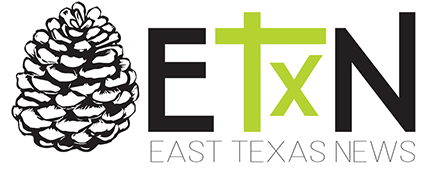Through a glass darkly – The Supreme Court and Religious Liberty
 by Jim Powers
by Jim Powers
This email address is being protected from spambots. You need JavaScript enabled to view it.
The Greek word translated “glass” in 1 Corinthians 13:12 in the NT is, some would say deliberately, ambiguous. The likely meaning refers to a lens or a mirror, as in a poor reflection in a mirror. It has also been translated as “window.” Regardless, the idea is that truth is often obscured by our inability to see objectively.
There is a case before the U.S. Supreme Court right now regarding religious liberty that is obscured, not so much by the objective facts of the case, but by the conflicting clauses in the First Amendment to the Constitution. It’s a case of the right to free speech by government employees versus the prohibition against a government endorsement of religion.
The conservative Justices’ questions suggest that they are trying to thread a needle, carving out a narrow path to finding for the coach. Seems clear cut, but it is anything but.
Joseph Kennedy, a former football coach, was fired by a Washington high school ostensibly
for praying on the 50-line after his team’s football games. The case has been confused by the school’s and student’s statements that he also held prayer meetings in the field house, and that in both places he invited students to join him. Regardless, the Justices have zeroed in on the prayer on the 50-yard line issue.
On the one hand, the First Amendment has been interpreted to extend the guarantee of free speech and free exercise of religion to government employees. On the other is the Constitution’s prohibition of the government’s endorsement of religion. And on the other (yeah, there is another) is the problem of students feeling like they must accept a coach’s “invitation” to participate in prayer because of the coach’s power over them. Who wants to get benched because you wouldn’t pray with the coach!
Reading some of the questions that have been asked, I lean toward believing the court is going to rule on the narrow issue of a coach’s right to pray silently on the 50-yard line and save the rest for another fight. But that’s just my reading of the case through that glass darkly.
This case is part of a broader fight that has been waged for decades, the place of prayer in the public schools. In this case, I have no problem with a coach praying by himself silently on the 50-yard line. It is consistent with the idea that students (or anyone else) can pray silently in school whenever they wish. Once you involve other people, though, I believe you have crossed the line. And it’s that line that I see as the problem with a Supreme Court decision in the coach’s favor. On the other side of a door opened in law, there is a slippery slope. And I’ve seen that slope too many times.
Throughout the 1990s and into the 2000s, every year found another “Religious Freedom Amendment” or “Religious Freedom Act” advanced in congress.
One memorable fight resulted in 1997 from H.J. Res. 78 introduced by Rep. Ernest Istook, Jr. which read “to secure the people's right to acknowledge God according to the dictates of conscience, neither the United States nor any State shall establish any official religion, but the people's right to pray and to recognize their religious beliefs, heritage, or traditions on public property, including schools, shall not be infringed; and (2) neither the United States nor any State shall require any person to join in prayer or other religious activity, prescribe school prayers, discriminate against religion, or deny equal access to a benefit on account of religion.”
I have bolded the “gotcha” phrase meant to put public prayer in public schools. This amendment stirred up a real hornet’s nest, pitting various religions, political parties, and free speech advocates against each other. The ACLU led the effort opposing it. (Full disclosure: I’m a long-time member of the ACLU and was involved in the debate).
The ACLU’s argument, that ultimately carried the day with congress and defeated the proposed amendment, was that by allowing student led prayer over the public address system of the school (which was the goal of the advocates of this amendment), the school would have to allow prayer representing any recognized religion. Satanism and Wicca are recognized religions in the U.S.
If you do not know, Wicca is the religion practiced by many Witches.
Satanism is a scary word because Satanists have been depicted in too many movies as child sacrificing murderers who drink the blood of children.
Satanists (the religion) are non-theistic, which means they don’t believe in the Christian God, so can’t believe in Satan. Without God, there is no Satan. Most Satanists I’ve met were humanists with very high ethical standards. Very family oriented. Anton Szandor LaVey, the founder of the Church of Satan, was an author and something of a showman.
Regardless, no one in the debate wanted to go down that slippery slope, with Wiccan or Satanist prayers in the schools. And it’s the same slope that’s on the other side of a Supreme Court decision favoring the coach.
You are a guest
or post as a guest
Be the first to comment.

